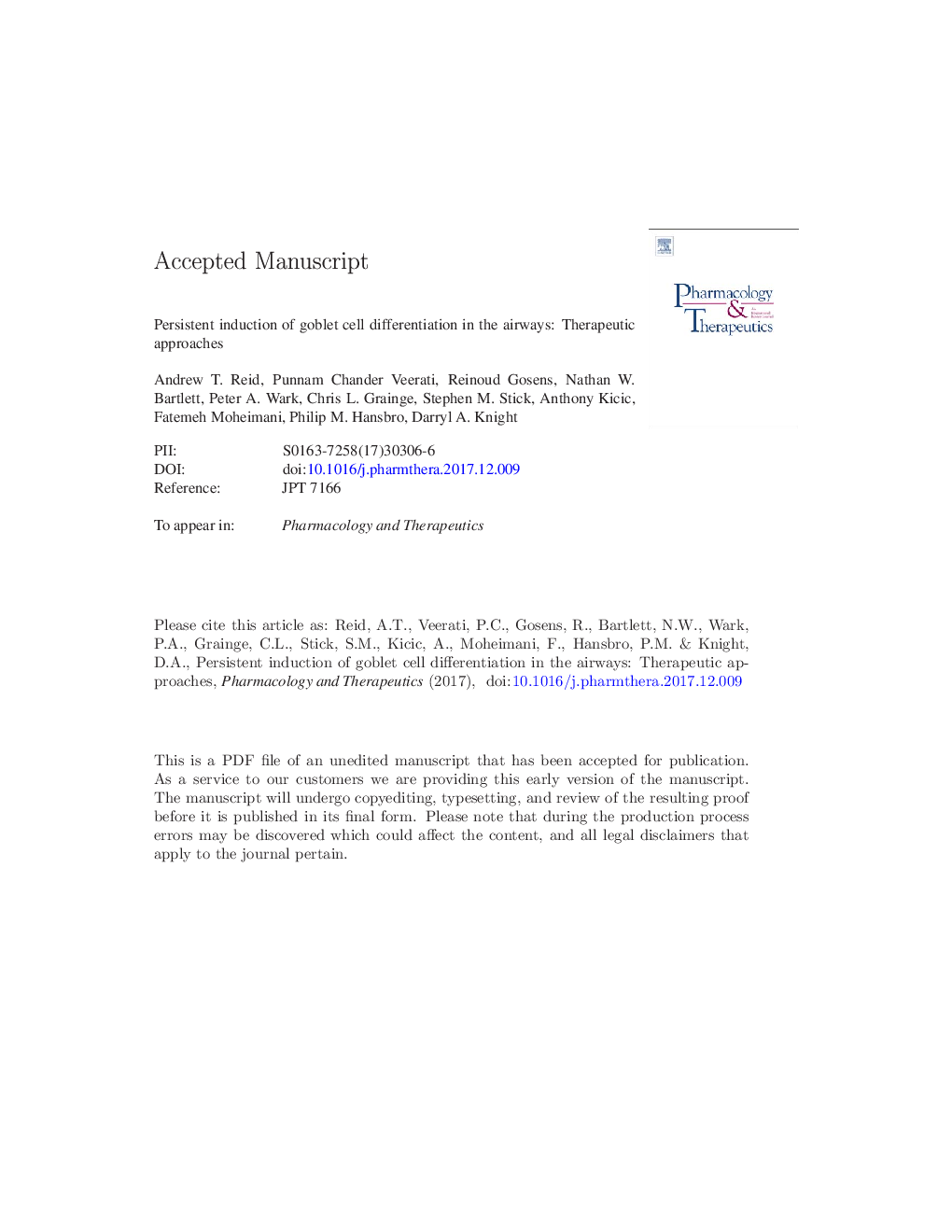| Article ID | Journal | Published Year | Pages | File Type |
|---|---|---|---|---|
| 8536859 | Pharmacology & Therapeutics | 2018 | 74 Pages |
Abstract
Dysregulated induction of goblet cell differentiation results in excessive production and retention of mucus and is a common feature of several chronic airways diseases. To date, therapeutic strategies to reduce mucus accumulation have focused primarily on altering the properties of the mucus itself, or have aimed to limit the production of mucus-stimulating cytokines. Here we review the current knowledge of key molecular pathways that are dysregulated during persistent goblet cell differentiation and highlights both pre-existing and novel therapeutic strategies to combat this pathology.
Keywords
EGFRGCDERKOVATGFmTORshRNAHNEmAbNICDHB-EGFSOCSHDMPI3KCCSPTNFcAMPMAPKshort-hairpin RNACyclic adenosine monophosphateAsthmaSTATMonoclonal antibodyAktMechanical stressHuman neutrophil elastaseOvalbuminepithelial to mesenchymal transitionEpitheliumCOPDChronic obstructive pulmonary diseasetransforming growth factorEMTNotch intracellular domainMonoclonal antibody therapyTherapeuticsuppressor of cytokine signalingGoblet celltumor necrosis factorphosphatidylinositol-3 kinaseCystic fibrosisSignal transducer and activator of transcriptionMucusSignaling pathwaysMicro-RNAMechanistic target of rapamycinclub cell secretory proteinprotein kinase Bmitogen activated protein kinaseextracellular signal-regulated kinaseHouse dust miteEpidermal growth factor receptor
Related Topics
Health Sciences
Pharmacology, Toxicology and Pharmaceutical Science
Pharmacology
Authors
Andrew T. Reid, Punnam Chander Veerati, Reinoud Gosens, Nathan W. Bartlett, Peter A. Wark, Chris L. Grainge, Stephen M. Stick, Anthony Kicic, Fatemeh Moheimani, Philip M. Hansbro, Darryl A. Knight,
